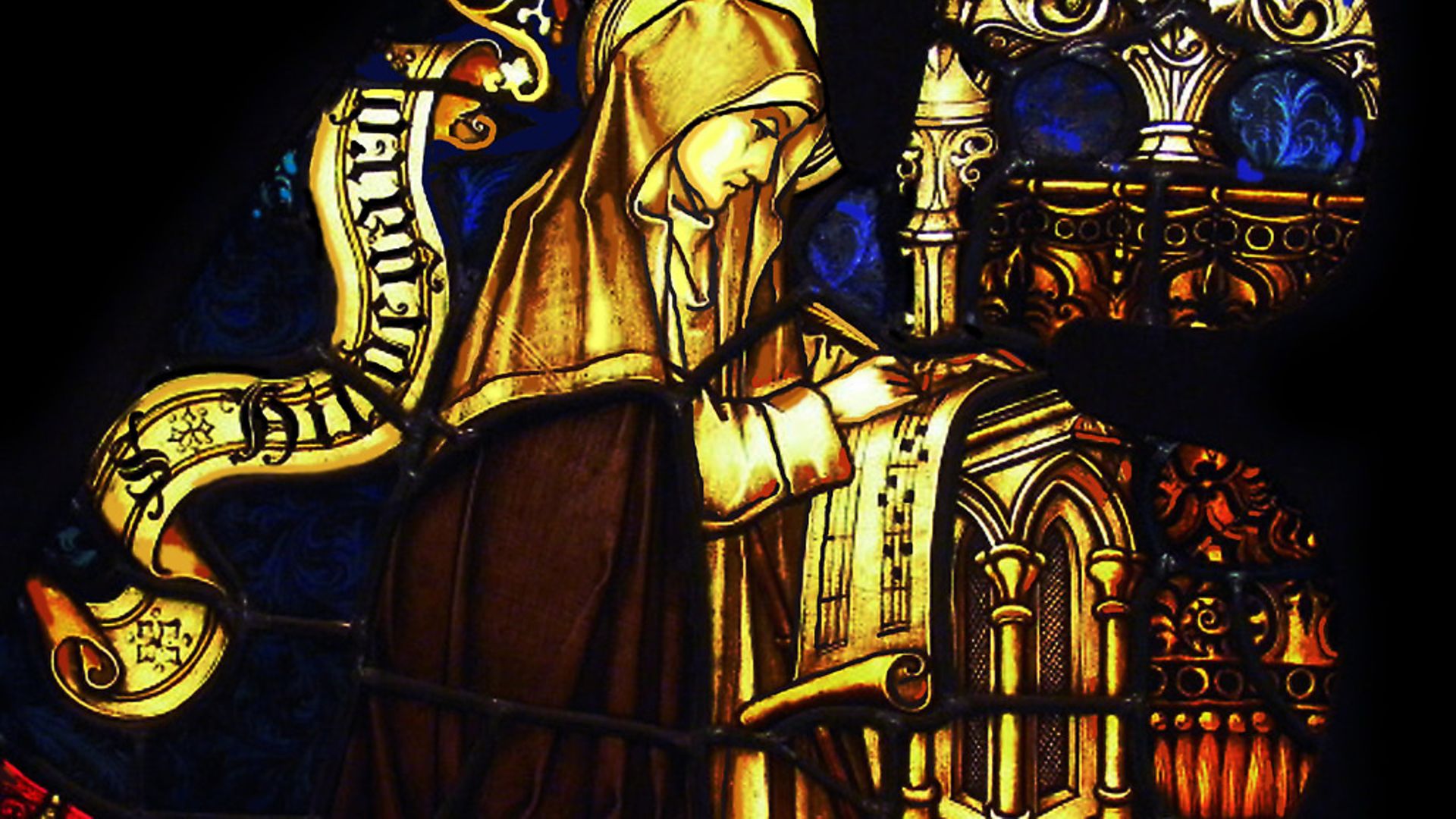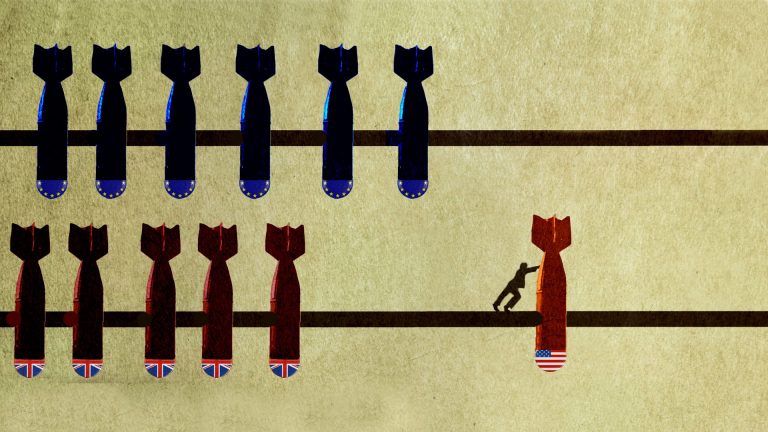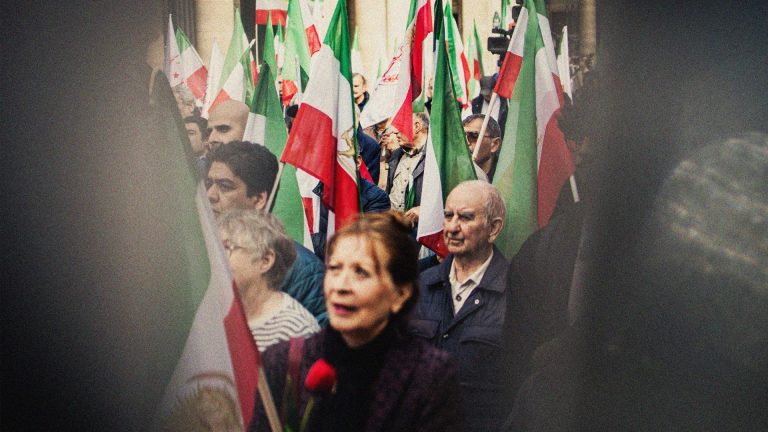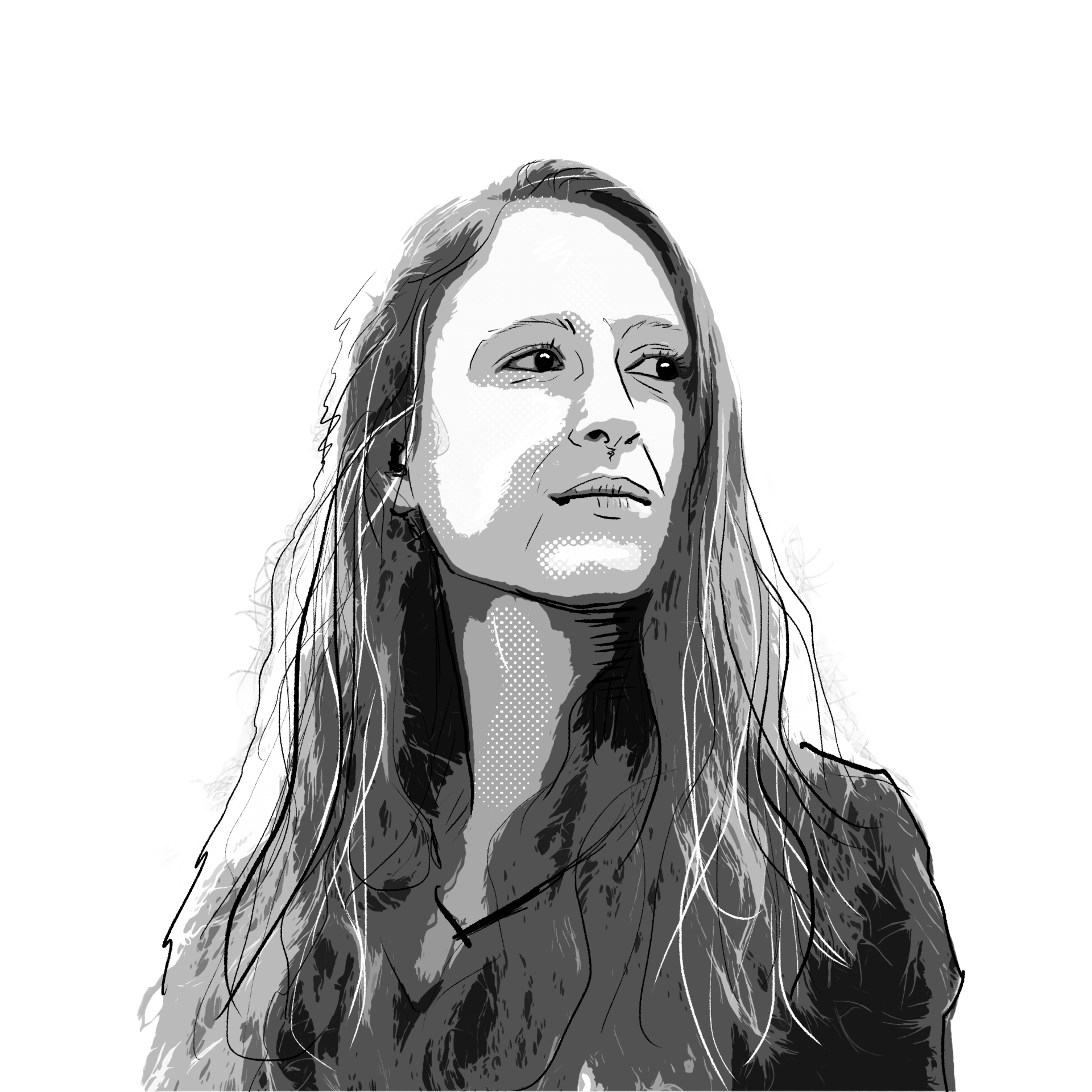
As the Romani brought a gypsy beat from the east, Europe’s greatest musical innovator, Hildegard of Bingen, found a sound that could examine the human condition, as much as praise God. SOPHIA DEBOICK reports.
Not even a century on from the Norman conquest, 1150 found England in the grip of political crisis. Henry I had ignored norms of primogeniture and tried to install his daughter Matilda as his successor following the death of his only son, but when Stephen of Blois took the throne on Henry’s death in 1135 a civil war broke out that lasted nearly two decades.
Such turmoil was unsurprising in a country that had experienced change in every area of life in the decades following William the Conqueror’s victory. Continental culture had been imported in everything from local government to the Church, and the continent was still setting the agenda in 1150, as an intellectual powerhouse was founded in Paris and new French religious orders spread across the Channel. And while the music of the High Middle Ages brings to mind images of lyre-strumming men in tights, and the troubadours were indeed busy promoting ideals of courtly love in southern France and northern Spain by this time, it was religious music that was entrancing European hearts and minds via a musical genius in the Rhineland and a golden age of monasteries ringing with plainchant.
Hildegard of Bingen was punching well above her weight as a middle-aged woman in a man’s world in 1150. Hildegard had been a cloistered nun since childhood, but her enclosure at the Benedictine monastery of Disibodenberg in the Rhineland had hardly resulted in meekness and silence.
A mystic and polymath whose studies of botany and medicine would be foundational for those sciences, Hildegard was a name known across Europe by 1150. Her theological text Scivias (‘Know the Ways’) had been championed by founder of the French Cistercian order, Bernard of Clairvaux, and approved by Pope Eugenius III at the 1148 Synod of Trier, and she maintained a voluminous correspondence with the great men of the Church.
In 1150 she had been prioress of her community for over a decade but, frustrated with being under the authority of her abbot, daringly went over his head to secure her archbishop’s approval to start her own religious community in Rupertsberg, which she ran with characteristic innovation. But the year also marked the middle of the two decades when Hildegard composed a great body of music – yet another field in which she demonstrated an inspired ability – she claimed: ‘I composed and sang a song with music in praise of God and the saints without being taught by any human being’.
Hildegard had first written music for her nuns to sing during the Divine Office – the liturgy performed at set times throughout the day – and more than half her surviving compositions are antiphons – short refrains chanted during prayers. But despite this formal focus, her music was absolutely packed with personality. Where simple one-octave lines characterised monophonic plainchant, Hildegard aimed for a deeper dynamism of the voice, making the music echo the emotion of words which were heavy with the beauty of the natural world and had a clarity of imagery only a divine visionary could impart.
Her hymn to the Virgin Mary, Ave generosa, described her as ‘the lily, gleaming white’, whose ‘flesh rejoiced just as a blade of grass on which the dew has fallen’, while the responsory Vos flores rosarum twisted the potentially kitsch imagery of rosebuds into an extraordinarily vivid picture of martyrdom: ‘You buds of roses, within your blood outpoured, you’re blessed in joys supreme and fragrant.’
For Hildegard, music could not only teach the listener ‘about inward things’, but was a direct line to the sacred – it was the sound of the angels by which humanity could get back in touch with their prelapsarian state of purity. Ultimately, Hildegard wrote that ‘a man’s soul also has harmony in itself and is like a symphony’, and her extraordinary dramatisation of the inner struggle between good and evil of her musical morality play Ordo Virtutum showed that she used music to examine the human condition just as much as to praise God.
As Hildegard’s myriad intellectual achievements proved, scholarly endeavours could not be separated from the life of the Church in this period, and 1150 marked the birth of the University of Paris from beginnings within the cathedral school of Notre Dame.
Formally recognised 50 years later, it became a philosophical and theological powerhouse and the seat of learning for later leaders of Europe. Future Bishop of Paris Peter Lombard was a professor there by 1150 and his Sentences, a collection of patristic interpretations of Scripture published that year, would become the cornerstone of university teaching on theology for centuries. Sentences was also a classic of the scholastic movement, as the dogmatic approach of the theologians of the past was rejected in favour of a logical, dialectical, and speculative analysis of theological questions.
Meanwhile, the founding of new monastic institutions was the story of the century in post-Conquest England, many of them imports from France, and these were temples of learning as much as centres of prayer. While the famed Yorkshire abbeys of Rievaulx and Fountains had been founded in the 1130s under the reformist Cistercian order that had been established earlier in the century at Clairvaux Abbey, north-eastern France, in 1150 itself Dorset’s Augustinian Christchurch Priory, Birkenhead’s Benedictine priory and Scotland’s Dryburgh Abbey (an outpost of the northern French Premonstratensian order, which had been founded only in 1120), were created at the initiative of Norman noblemen.
The implications of these new religious houses for music were considerable. The cloisters of these great buildings were alive with Gregorian chant as the Divine Offices were sung around the clock, and while Bernard of Clairvaux may have advocated simplicity in such religious music, it was clear that, as with Hildegard’s innovations, plainchant was not always so plain.
Already, in the 10th century, Odo of Cluny, the second abbot of the Benedictine abbey – the centre of the Cluniac reformist movement that was already spreading across Europe by the mid-12th century – made clear the creative potential within this ostensibly formal music. He wrote that in the Offertories and Communions sung during the offering of the Eucharist ‘there are the most varied kinds of ascent, descent, repeat’ which represented ‘delight for the cognoscenti, difficulty for the beginners’, concluding ‘they are not so much made according to the rules of music, but rather evince the authority and validity of music’.
While a picture of a dark, oppressive religion is painted by the emergence of the concept of purgatory around this time, encouraged by Cluny instituting November 2 as All Soul’s Day – dedicated to prayers for the suffering souls of the dead in a third place between heaven and hell that Hildegard described as stinking, flaming marshland populated by toads and snakes – in the musical life of the Church there was much joy and creativity to be found.
In the east, meanwhile, it was the heathen soul that was staking a claim to musical mastery. Having migrated out of India several centuries before, the Romani peoples had reached modern Turkey and the Balkans by the early part of the 12th century and their presence did not go unnoticed in the capital of the Byzantine empire, Constantinople.
Around this time canon lawyer Theodore Balsamon wrote of the Athingonoi – the root of the term for gypsy peoples in many European languages – as ‘bear keepers’ and ’snake charmers’, placing them firmly in the entertainment field, and already their status as musicians had been recorded.
Hamza of Ispahan’s Arabic chronicle History of the Kings of Earth of around 950 had told the story of a fifth century Persian king calling 12,000 musicians from India to come to entertain his peoples, a story elaborated on slightly later in the Iranian national epic poem Shahnameh, which speaks of ‘ten thousand Luris, men and women, expert in playing the lute’. Later, the tax records of early 16th century Rumelia (modern Macedonia, Yugoslavia, Bulgaria, European Turkey and northern Greece) showed most gypsies were registered as sazende – musicians. Given that the earliest records of the music of another marginalised and relentlessly oppressed group, the Jews, are the notations for synagogue chants written by cleric Obadiah the Norman Proselyte at the beginning of the 12th century, this was a period when the fundamental building blocks of the world’s musical DNA were well in development.
The written record shows Romani peoples beginning to appear in Europe in the 14th century, and their impact on the musical life of that continent would be incalculable, from Hungary’s greatest composers, Béla Bartók and Franz Liszt, pursuing obsessions with gypsy music, to flamenco – simply Andalusian gypsy music – coming to be seen as the quintessential music of Spain. The vibrant home-grown musical life found in the 12th century religious houses of Europe may be less appreciated today, but as a means of thinking about humanity, God and everything, it was key in the development of the European psyche and produced musical treasures which are just waiting for rediscovery.









